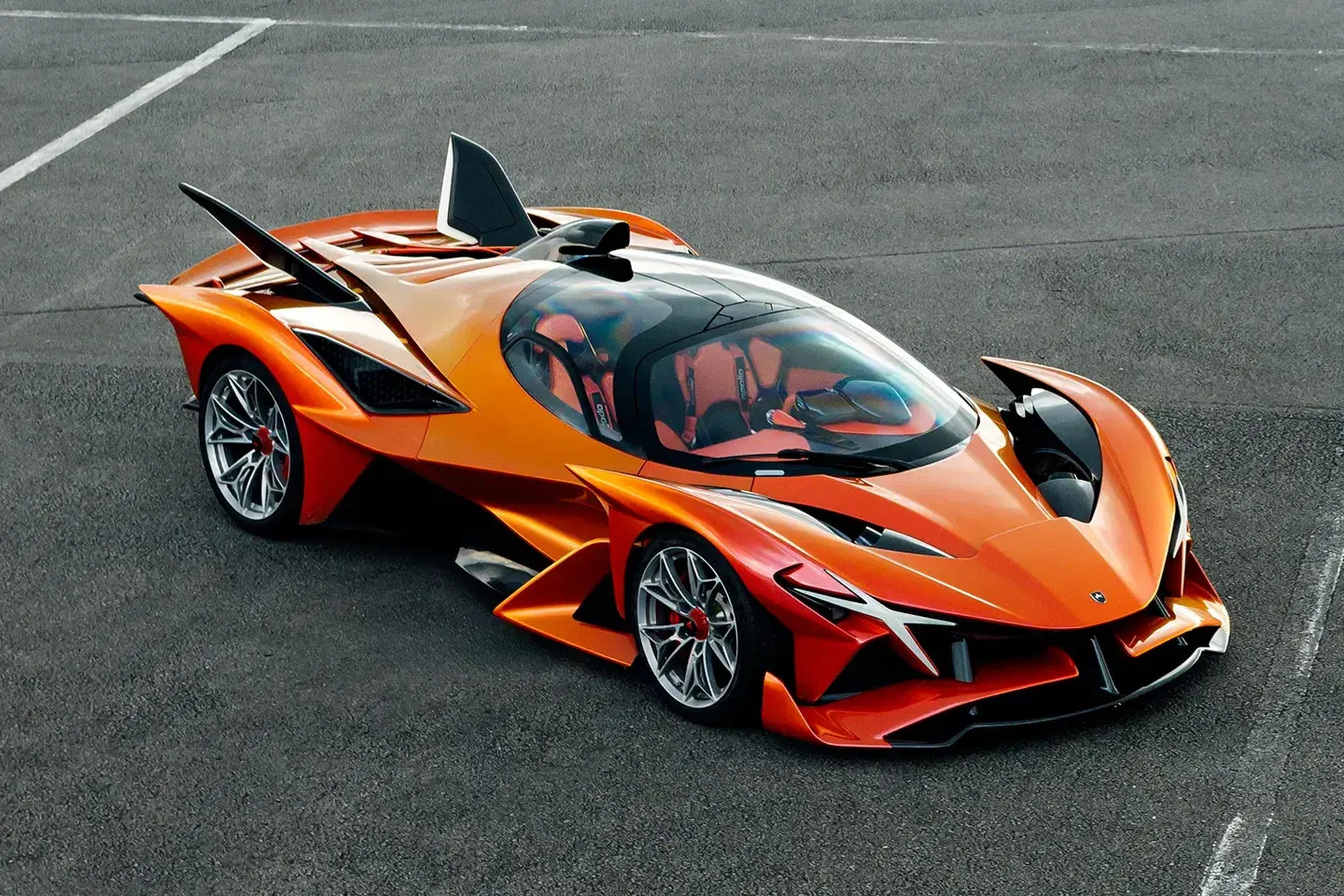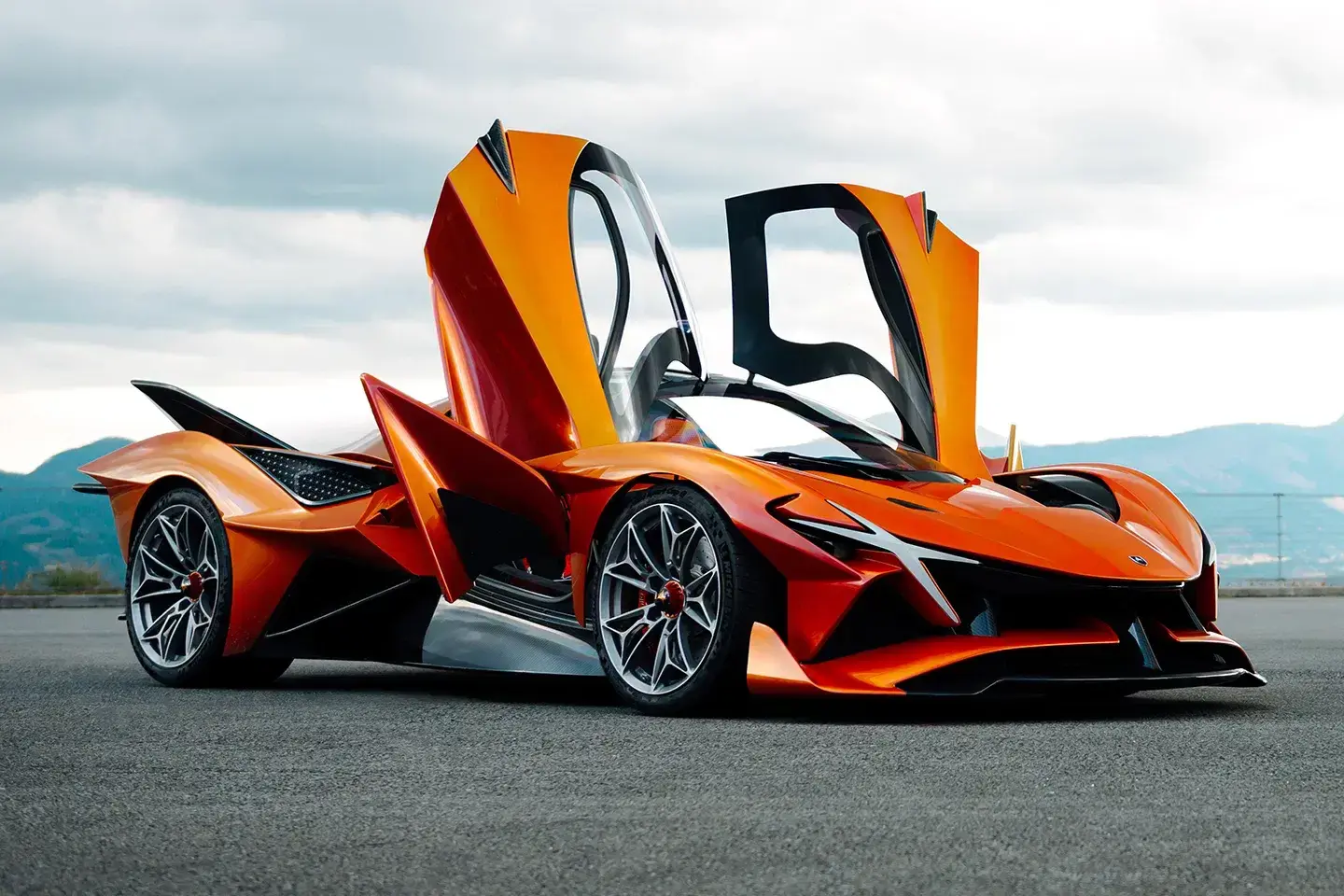 When the original Apollo debuted, it immediately shook the supercar world. Armed with a twin-turbo 4.2-liter Audi V8, it shattered the Top Gear lap record, proving that speed was evolving faster than the Ferrari 296 Speciale or Porsche 911 Carrera S could keep pace.
When the original Apollo debuted, it immediately shook the supercar world. Armed with a twin-turbo 4.2-liter Audi V8, it shattered the Top Gear lap record, proving that speed was evolving faster than the Ferrari 296 Speciale or Porsche 911 Carrera S could keep pace.
The Apollo quickly became a benchmark for high-performance road racers, admired for its raw, mechanical precision and fearless approach to driving.
Despite its early triumphs, the decade's latter part brought financial turbulence. Gumpert filed for bankruptcy in 2013, but the Apollo name survived, acquired by a Hong Kong-based consortium that also owns De Tomaso.
The brand’s revival came from the Apollo Intensa Emozione (IE), a naturally aspirated V12 hypercar crafted with assistance from HWA. The IE cemented the name’s return with styling that rivaled Lamborghini Revuelto and a driving experience that fused passion with precision.
Introducing the Apollo Evo: Track-Only Evolution
 Now, Apollo has taken the next step with the Apollo Evo, a car that embodies the future of track-focused performance. Built in an ultra-limited run of just ten units, the Evo features a new carbon monocoque, enhanced aerodynamics inspired by Le Mans Hypercar technology, and a power boost over its predecessor.
Now, Apollo has taken the next step with the Apollo Evo, a car that embodies the future of track-focused performance. Built in an ultra-limited run of just ten units, the Evo features a new carbon monocoque, enhanced aerodynamics inspired by Le Mans Hypercar technology, and a power boost over its predecessor.
Designed as a pure-bred track machine, Apollo positions the Evo as a car that delivers “the emotive thrill of the past through the engineering technology of the future.”
Under the hood, the Evo retains the Ferrari V12 engine, now producing 800 horsepower—up from 780hp in the IE—channeling power to the rear wheels via a six-speed sequential gearbox.
Performance metrics are staggering: a 0-60 mph time of under three seconds and a top speed exceeding 200 mph. Complementing its performance, the Evo features a new titanium exhaust engineered for both weight reduction and an unforgettable soundtrack.
Engineering Excellence: Carbon, Weight Reduction, and Stiffness
The Apollo Evo is as much about advanced engineering as raw speed. Apollo claims a 10% reduction in weight and a 15% improvement in chassis stiffness, thanks to a fully carbon fiber monocoque, subframes, and crash structures. This rigid foundation provides drivers with unparalleled confidence to exploit the car’s full performance potential.
Handling is further enhanced with ceramic brakes, forged aluminum wheels, and Michelin PS5S tires, ensuring the Evo can translate its power and aerodynamics into consistent, precise track performance. Apollo emphasizes that the aerodynamic package, while inspired by modern endurance racers, prioritizes driver control and balance rather than chasing extreme downforce numbers.
Expert Insight from Apollo Leadership
“Following the success of the Apollo Intensa Emozione, it was obvious for us to push the envelope even further,” said Niko Konta, Apollo CEO. “To extract the fullest potential from the platform, we have fine-tuned an already exceptional design while applying the latest in cutting-edge technologies and processes to truly take the Evo to another level.”
The interior of the Evo remains under wraps for now, but enthusiasts can expect a cockpit designed for both focus and engagement, reflecting Apollo’s philosophy of uniting driver and machine. First deliveries are slated for the first half of next year, leaving fans eagerly anticipating which track will host the Evo’s debut.
The Apollo Evo in Perspective
The Apollo Evo represents more than a hypercar; it’s a statement on the evolution of automotive engineering. By combining the raw emotion of a V12 supercar with car modifications guide and motorsport-inspired aerodynamics, Apollo is catering to collectors and driving purists who value both precision and passion.
For automotive enthusiasts, the Evo underscores a broader trend: manufacturers are increasingly blurring the line between road and track, delivering machines that are as much about experience as outright speed. With only ten units being produced, the Evo is poised to become an instant collector’s item, ensuring that the Apollo name remains synonymous with innovation, excitement, and track dominance for decades to come.
 When the original Apollo debuted, it immediately shook the supercar world. Armed with a twin-turbo 4.2-liter Audi V8, it shattered the Top Gear lap record, proving that speed was evolving faster than the
When the original Apollo debuted, it immediately shook the supercar world. Armed with a twin-turbo 4.2-liter Audi V8, it shattered the Top Gear lap record, proving that speed was evolving faster than the  Now, Apollo has taken the next step with the Apollo Evo, a car that embodies the future of track-focused performance. Built in an ultra-limited run of just ten units, the Evo features a new carbon monocoque, enhanced aerodynamics inspired by Le Mans Hypercar technology, and a power boost over its predecessor.
Now, Apollo has taken the next step with the Apollo Evo, a car that embodies the future of track-focused performance. Built in an ultra-limited run of just ten units, the Evo features a new carbon monocoque, enhanced aerodynamics inspired by Le Mans Hypercar technology, and a power boost over its predecessor.



















